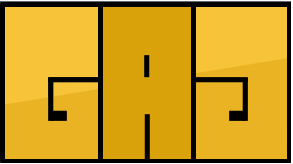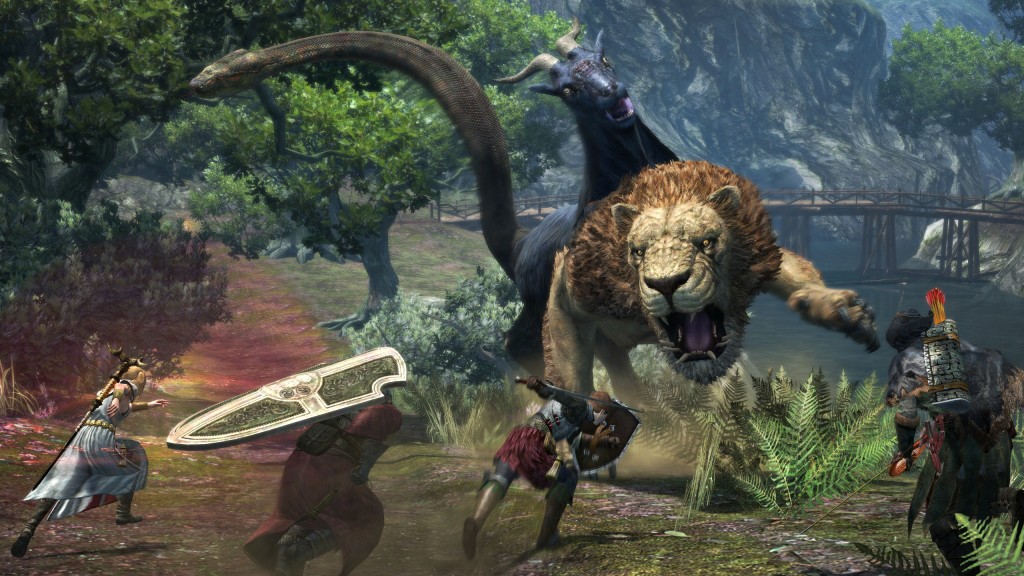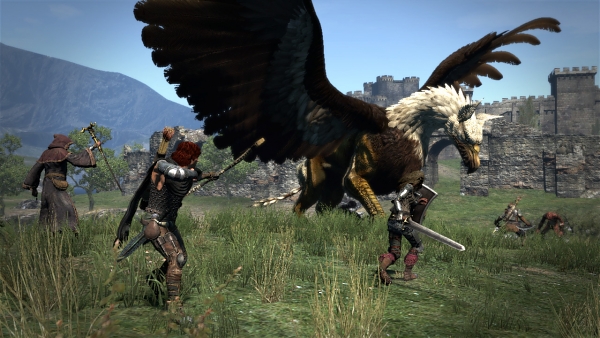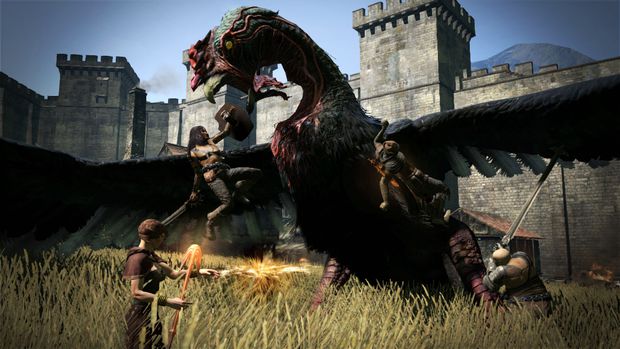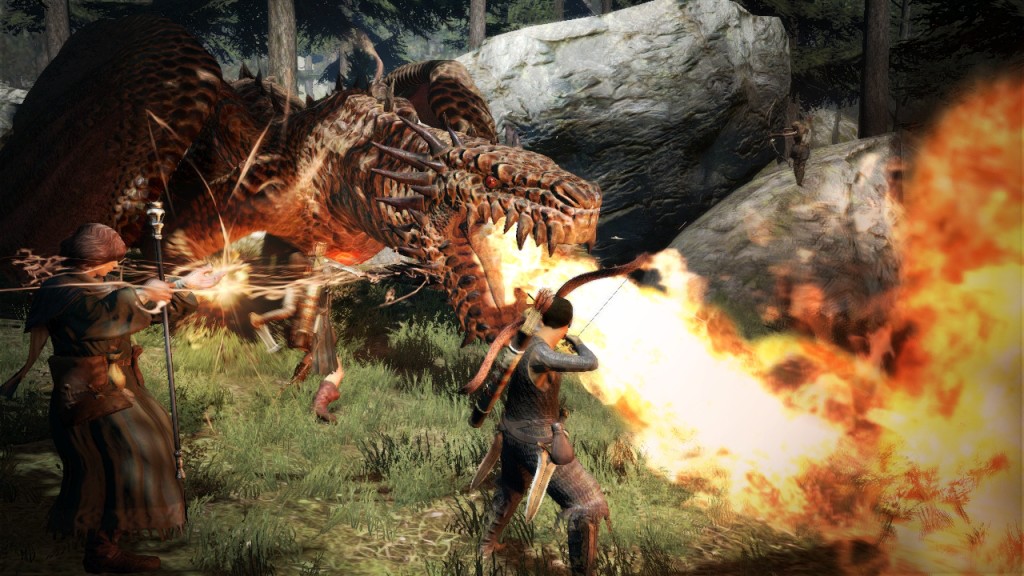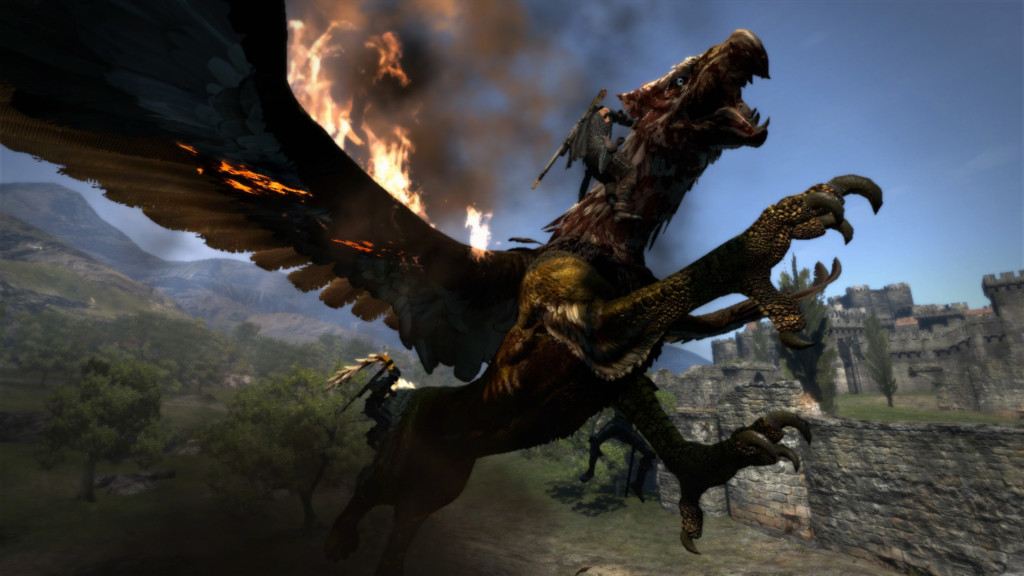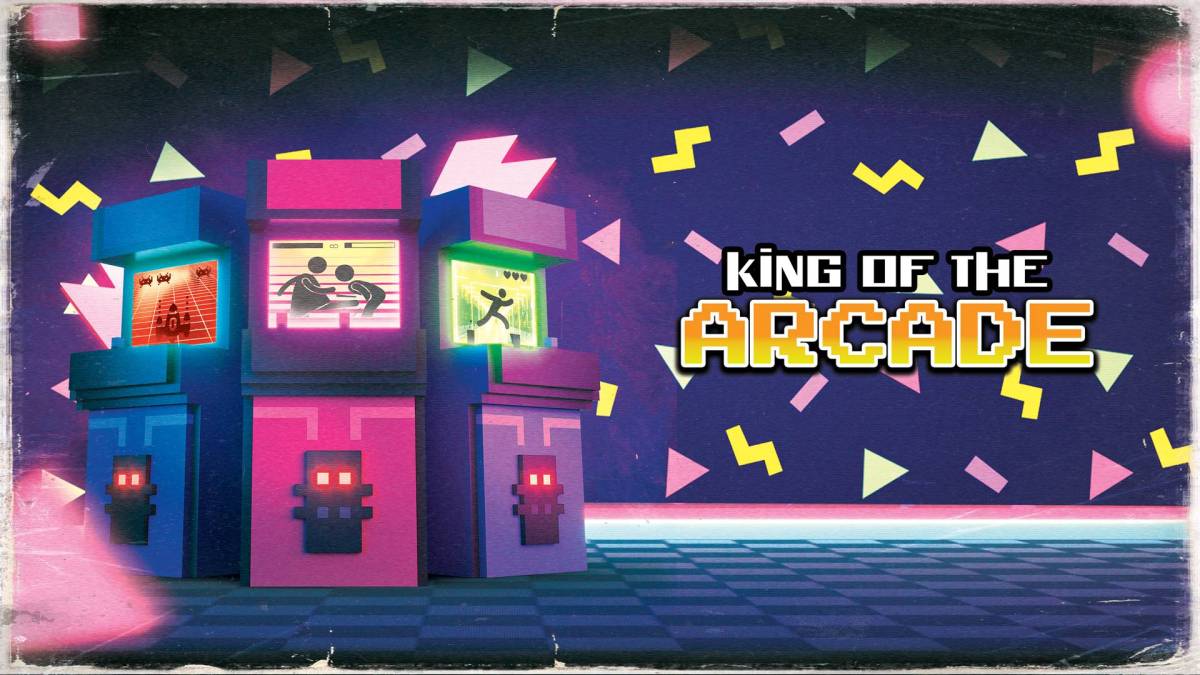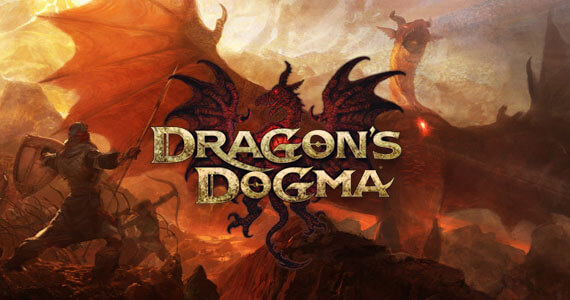
Platforms: Xbox 360 (reviewed) and Playstation 3
“As the cyclops started up its relentless assault on my party, a rogue goblin struck a massive blow against my pawn that handled the healing duties for my party, knocking her off the fort and putting her too far out of reach for me to revive her. Stuck facing multiple goblins from one direction and a gigantic, armored cyclops in the other, I decided to concentrate on a near suicidal offensive against the cyclops with my two remaining pawns. While it might not seem like the brightest move, I thought that if I kept hitting the cyclops, it might take out a few goblins in its fury. A bold, perhaps foolish, plan, but without a healer and my supplies running thin, I decided to go by the old motto of ‘fortune favors the bold.’”
This excerpt from my impression of Dragon’s Dogma summarizes the best parts of it. As I mentioned at the end of it, Dragon’s Dogma is really more about its moments than its mechanics.
I normally like to spend a little time going over the story, but it’s such an almost nonfactor, that I’ll hit the points I need to rather than bore you with them. Chances are if you end up playing this based on my review , you’re going to be bored enough with the story, you won’t need me to subject you to it any longer than necessary. You, after a tutorial quest, are a villager that you get to create with a fair degree of customization. A dragon attacks your town, tears shit up, and you charge headlong at the thing. Solo. Needless to say, you don’t fare so well. The dragon, admiring your gumption, decides to take your heart rather than kill you outright. Whatever magic he uses (dragon magic, duh!) somehow allows this to not kill you. Yeah, I don’t get it either. You wake up and find yourself able Arisen, a person able to enter into a contract with pawns, a human-like race that don’t seem to have any purpose in life but fighting alongside you (more on this in a bit). Naturally, you decide it’s time to go take on the dragon, stop it from destroying the world, and reclaim your heart.
That’s about all you need out of the story. With that out of the way, let’s get on with this. 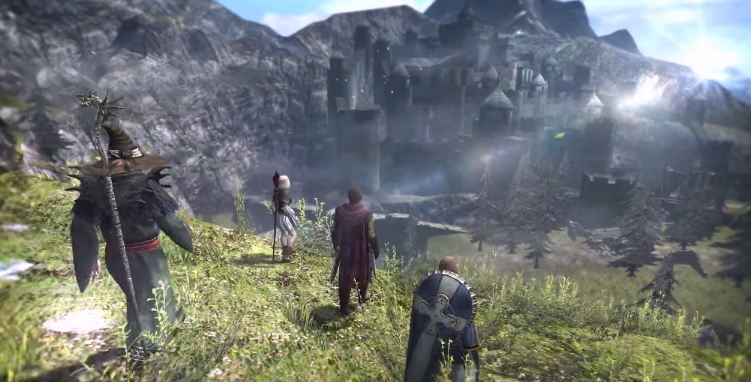
The pawns, the race that love to fight and die for you, are one of the game’s most interesting aspects. You have one constant companion pawn who you customize along with your character. This pawn will be your side throughout the game. Once you gain access to the Rift, the realm of the pawns, you can recruit other pawns to your cause. These pawns are the companions of other players from across the world. Dependent on their levels or if you’re friends with their creator, they can be free or cost Rift Crystals, which you can earn by your pawn being hired by other Arisen across Xbox Live or PSN or random enemy drops.
If your pawn falls in battle, it’s as simple as going to the nearest Rift stone and reclaiming him (press a button). If any of your support pawns fall, you have to rehire them once you make it into the Rift again. Any items your support pawns are carrying, aside from equipment, when they fall will automatically go into your inventory overflow that you can access through certain vendors. Any equipment they were holding for you will be delivered as gifts to the Arisen the pawn belongs to, so be wary when a pawn is near death.
Your pawn, while being out and about with other Arisen, will not earn experience points or gold. What they will gain, aside from the previously mentioned Rift Crystals, is knowledge in taking down enemies that you’re unfamiliar with or possibly discover new weaknesses on familiar ones. If the person that hired your pawn feels so inclined, they can rate your pawn and send it away to you with an item as a gift. Sometimes getting rotten fish back says more about your pawn’s helpfulness than the rating they give.
One last thing on the pawns that I didn’t understand until I played the game is that your pawn is never away from you. The hiring of your pawn is more like a dimensional copy is made and can be whored out to any number of other Arisen. While you’re fighting a chimera, your pawn may very well be fighting a drake in another dimension. Once you go back to sleep at an inn or camp, your pawn will come to you when you wake and give you any Rift Crystals or items they have received since the last time you rested. If it’s been a few hours, you may not get anything. Come back a few days later and you may find your pawn has gone the rounds quite a few times.
When you receive these gifts, you’ll be forced to deal with the inventory system. While it’s serviceable, it’s definitely daunting to look at and does not get much better as time goes on and your inventory expands. Items are divided into categories that mostly make sense, but you’ll find yourself rummaging for an item long acquired and forgotten for a bit if you need it for a quest.
Alchemy is, as in just about every other RPG lately is seems, is in as well. Unfortunately, the system isn’t very sensible either. While it’s nowhere near the mess the overall inventory system, I rarely found myself wanting to rummage through my stored ingredients and try concocting new potions. Maybe it has more to do with actually going through the inventory system than the actual alchemy system itself, but I’ve found myself willing to dig through clunky UI before to get at something that was useful. Having to access mediocre by navigating through not-so-good definitely takes away from my desire to make my own potions.
Upgrading equipment is, blessedly, nowhere as cumbersome as the inventory or the alchemy. Go to a merchant that handles it, pick the piece of equipment you want upgraded, and pay the fee both in gold and materials and you’ve got yourself a stronger and lighter piece of armor or weapon. My only real complaint is once you get into the higher grade stuff, it becomes tough to decide where to upgrade as the necessary drops required for the items become more rare as the equipment becomes stronger. It makes sense, yes, but that still doesn’t make it any easier to decide on which piece to upgrade. More a personal quibble than anything, I suppose.
Wandering around looking for fights to get the drops is probably the most enjoyable aspect of the game. As I so subtly alluded to, the main quest is a bit of a bore, providing you with little more than a reason to go out and take down monsters four times your size. The plot will have you going from one end of Gransys to another in search of said monsters, occasionally finding a more human foe to fight against. What will make up the majority of your time, if you allow them to, are the sidequests that you get from quest boards scattered throughout the kingdom. The variety in quest types are a bit lacking, as they consist of fetch, escort, killing x amount of types of enemies, or clearing out certain areas. Not very interesting on paper, but you’ll often find yourself in the middle of a fight that more than makes up for the mundane questline.
While you’re completing these quests, you’re going to be on foot. A lot. And under attack. A lot. The game’s main strength is its combat so while being able to knock the snot out of a pack of bandits or an enraged ogre is a ton of fun, sometimes the wandering around from area to area is a bit of a chore. There isn’t any real fast travel in the game until a few hours in. Even then, it’s fairly limited as you can only set the marker in one spot and then travel to Grand Soren, the game’s central city that acts as the game’s hub, and the spot you placed it. Much later in the game, you’re able to buy more markers to place as fast travel points, but by then, you may have grown so accustomed to hoofing it everywhere, it might not seem like such a daunting task.
Another reason to not put so much weight against fast travel is missing opportunities to level up. Dragon’s Dogma can be tough. With no difficulty selection and a fairly wonky save system that only allows for one save file, any chance to strengthen your character and pawn should be taken up. Fighting not only nets you experience points and loot, but also points to spend on abilities and new classes.
There are three main classes to start with, with six additional classes unlocking fairly quickly. Three of unlocked classes are more specialized versions of the initial three and the other three are hybrid of the original three, making finding something that suits your play style a cinch. Your pawn can only choose between the original three classes, so finding a class that suits you and then finding a class for your pawn that compliments you is imperative to your survivability.
Graphically, Dragon’s Dogma is a hodgepodge of beautiful areas, locations, and enemies and some downright ugly character models. Once you get used to the game, I recommend turning off as much of on screen stuff as possible so you not only have more screen real estate to keep an eye on enemies, but also so you can enjoy the view.
The characters, your party and NPC’s alike, have a very lifeless look about them, seeming more like clay or plastic characters than something digitally rendered when given even a mild glance at them. Motion for the characters, however, is very smooth. There’s an occasional missing frame of animation, but it really only stands out because of how smooth they normally are.
The voice acting is surprisingly good, especially considering the lackluster story and lines the actors have to read. It’s a good thing they spent a little extra money on the voice actors because you’re going to be hearing your pawns an awful lot. Even toning their speech patterns down will have them babbling constantly during even the most mundane walk through the woods. They’ll often shout out useful information about the enemies your attacking, but while not in combat, you’ll wish there was a way to mute them. Even lowering your main pawn’s rate of speech finds him babbling at the slightest distraction.
The soundtrack is a nice a supplement to the game, but in the rather large soundtrack, only a few tracks really stand out beyond being forgettable. Hell, that might even have more to do with frequency at which you hear them and not any sort of separate quality of the tracks. Sound effects are wonderfully used though. You’ll hear characters voices from the direction you’re approaching them. A griffon might swoop in behind you and a full surround system will save you a few seconds of searching for the beast. Those few seconds could mean the difference between the life and death of your party.
Graphics – The character models aren’t particularly good looking, but the vistas and the monsters are beautiful and terrifying, respectively, to look at it. Frame rate hiccups and screen tearing are a more common than one would hope.
Sound – While the soundtrack isn’t particularly memorable, the sound effects, given the right setup, will make you feel like a griffon is really roaring in your face. Pawns speech gets a repetitive to the point you may start ignoring them completely.
Gameplay – Combat is fun and heavily action oriented. User interface is clumsy and vague.
Story – Not particularly interesting. While not bad, it’s not good either.
Replay Value – With a rather challenging post game dungeon which leads to a new game plus mode, Dragon’s Dogma can be played through to your heart’s content. Enemies don’t become more powerful on secondary playthroughs, so your mileage will vary.
Overall Length – When I finally put the controller down, I was about 45 hours deep. How much time you get out of it before you finish depends on your patience for fetch quests.
What Dragon’s Dogma lacks in a user friendly interface and compelling story, it more than makes up for in sheer fun. Dragon’s Dogma is one of those games than is more than a sum of its parts. Technical flaws (and dumb title) aside, I really feel this was a stellar start to what now has been confirmed as the first entry in a series. Capcom did a wonderful job of crafting this world, so hopefully the sequel eases the navigation of the inventory system a bit so this series can truly stand with the big boys of the RPG world.
